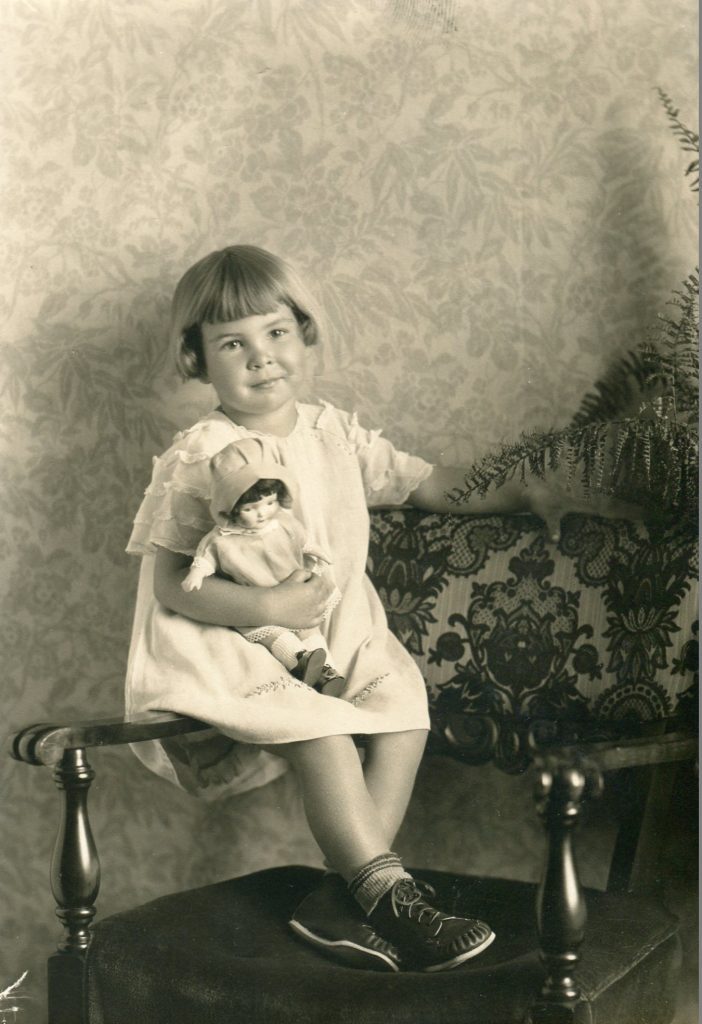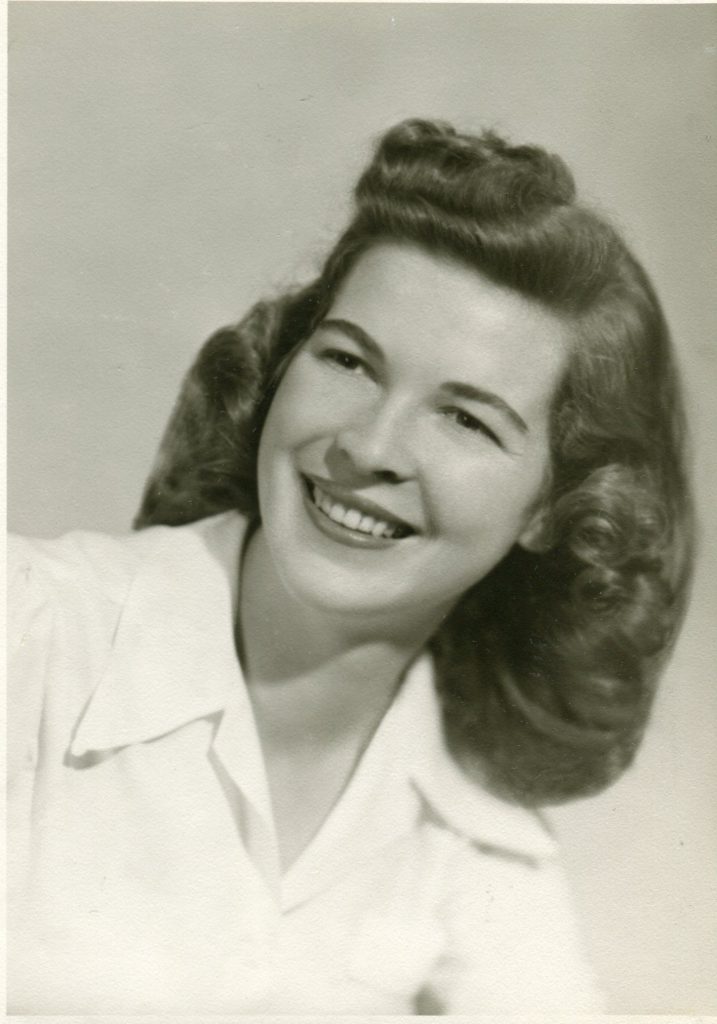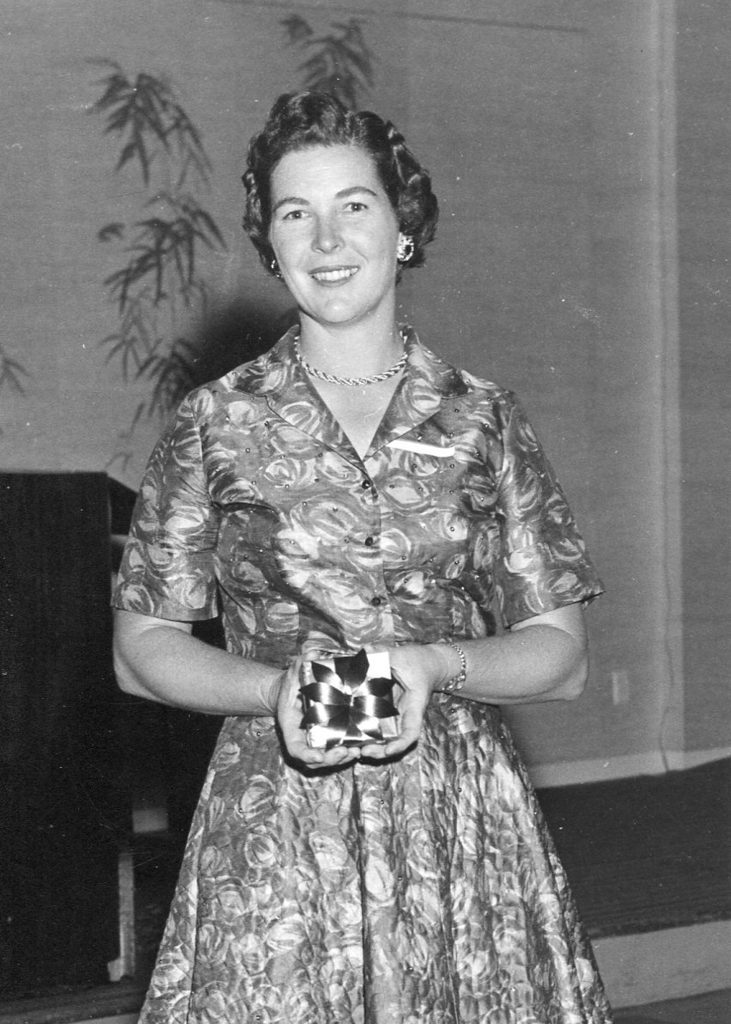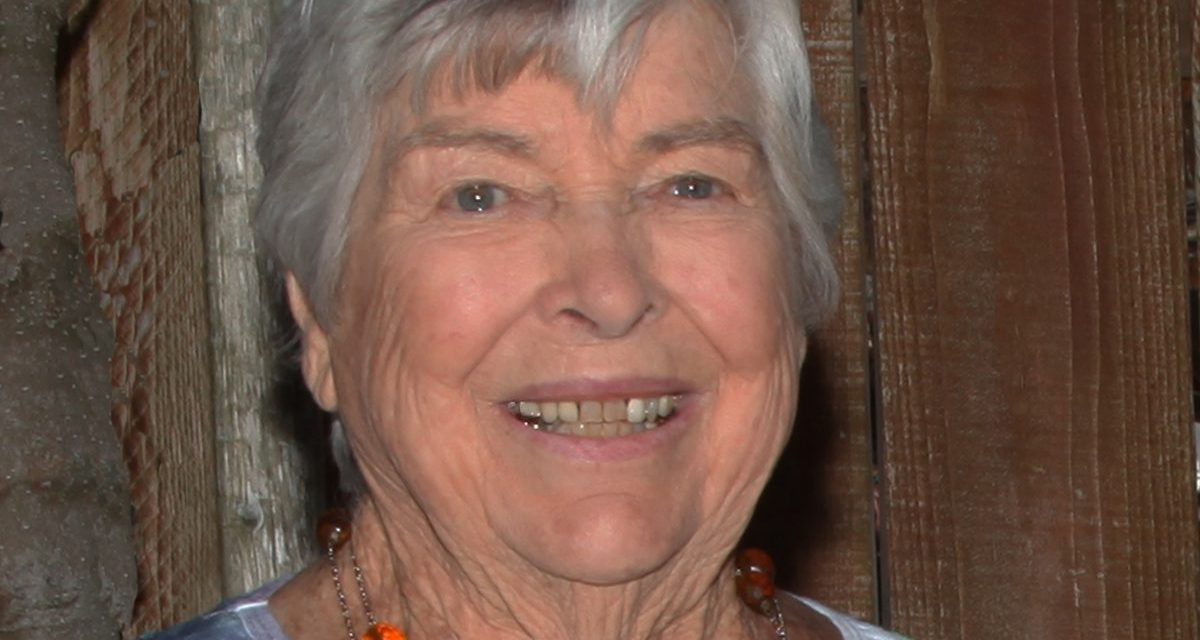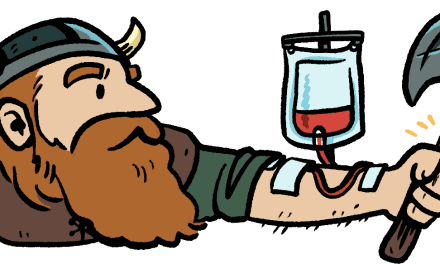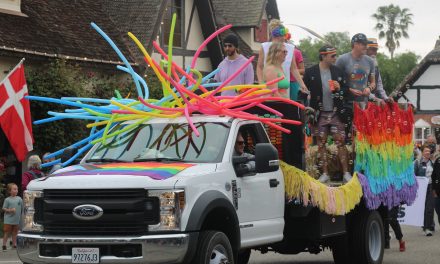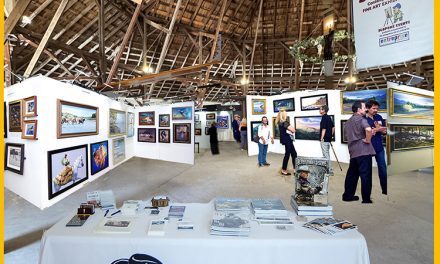Born in the ruins of a historic adobe, she has lived on that land for her entire life
EDITOR’S NOTE: This is the expanded story on Claire Bettencourt’s 100th birthday. A condensed story can be found in the Aug. 20 print edition of the Santa Ynez Valley Star.
How many people can say they were born in the ruins of a historic adobe, the first Catholic college in California, and have lived on that land for their entire life? Claire Hunt Bettencourt can.
She will be turning 100 years old on Aug. 31. She was born in 1924 in the wooden chapel where Mass was said daily, confessions heard, and was once the living quarters of the Franciscan friars who taught in what was the first college in California and one of the first 10 Catholic colleges founded in the United States. It was located in Santa Ynez and was called the College of Our Lady of Refugio, established in 1844. Its name was later changed between 1852 and 1854, without any recorded explanation, to the College of Our Lady of Guadalupe. The college was in operation from 1844 to 1882 — 38 years — when it closed and was nearly lost to history.
Sitting at a wooden kitchen table in a house that was built in the mid-1800s, Bettencourt recalled the history of the land she has lived on for 100 years, its purchase by her parents, about raising cattle and pigs, then becoming one of the first dairies in the Santa Ynez Valley, and eventually one of the first families to grow a vineyard producing grapes for fine wine. Old College Ranch, as it is now called, has seemingly produced a lot of “firsts.”
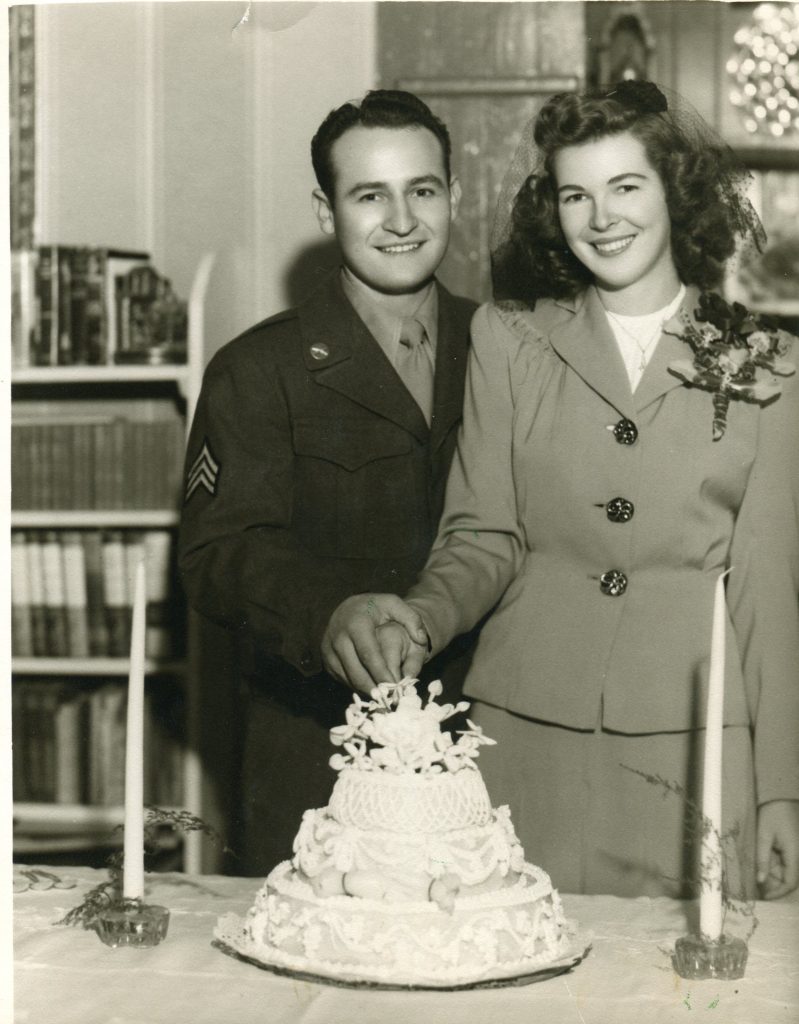
“There is some information written about the history of the land, how it was acquired, and how the College came into existence, but few, if any records remain between the time the college closed until the property was sold in 1923,” she said, offering a book with photos and newspaper clippings that she had saved over the years and compiled.
“The wooden part of the college had burned and the land and chapel (house) had fallen into disrepair. The land was purchased from the Church by the Santa Ynez Valley Development Company, which subsequently sold off parcels of the land, one of which was purchased by Archie and Bess Hunt, my parents, and Harold ‘Brick’ Buell. The 360 acres were divided in half,” she said.
“The decision as to who would get the half with the old chapel and adobe, as the other half had no buildings, was made by Brick. My parents had no money to build a house but the Buell’s did. It was very simple.”
“The house is where the priests and teachers lived and where they held daily services,” she said. “The house has gone through many changes over the years. It has had many lean-tos, add-ons, remodels, and, of course, plumbing. But the main section is pretty much the same. It has 10-foot ceilings, single walls, sloping floors, and the altar and the confessional are now the pantry. It is still very drafty and hard to heat. My father’s uncle built a rock fireplace in 1924 that is still the main source of heat. I was born there, just a few feet from here. My son Lee and his wife Sarah live there now. I live where the ranch workers used to live.”
Bettencourt recalled living on the ranch as a child.
“The climate was hot and dry with very little irrigation, no deep wells,” she recalled. “The house only had two bedrooms so we slept outside at night for years, my parents did too. It was wonderful. We only had an old pick-uptruck. We had horses and wagons, and rode horses all over the Valley. We had big wagons to haul the hay and finally, after the pickup we got an old Woody, our first car. Most of the family got carsick, so we never put the old windows up. I was the worst. I rode on the fender most of the time. We were stopped by the police one time in Thousand Oaks and I had to ride inside. I had a great childhood.”
Bettencourt spoke a little about her parents.
“Both of my parents were native to the area. My mother, Bess Rowe, was a teacher at Cathedral Oaks School and her father was a cattleman who managed operations on several large ranches in Ventura and Santa Barbara,” she recalled.”My father, Archie Hunt, was interested in farming and his father was a blacksmith and carriage maker, making buggies and wagons for Wells Fargo.
“They lived near the Santa Barbara Courthouse. Both of my parents attended high school in Santa Barbara and then graduated from UC Berkeley in 1916. My father also attended two semesters at ‘farm school’ at UC Davis. While my dad was in WWI they were married in August 1918 and moved to the Santa Ynez Valley the next year.”
Claire was the youngest of three children, all girls: Jane was the oldest, and Nonie (Wynona) came next.
“The Old College Ranch has always been a family operation. We all worked on the farm, feeding the animals, growing vegetables, and milking the cows. It was a lot of work but my dad always made it seem like fun,” she said. “I attended College School, graduated from Santa Ynez Valley Union High School, then went to UC Davis. During WWII, the Signal Corps took over the whole campus and we were told to go to Berkeley. I hated it there. I was a country hick in a big city school with lots of people and big classes, not what I had been used to at Davis.
“I came home and didn’t know what to do. Then I decided to attend Iowa State University at Ames. I graduated with a Bachelor of Science degree. I was mostly in agriculture. After graduation, I came back to the Valley and married my boyfriend, Boyd, who I met at UC Davis in 1945 in the Old Ballard Church. It was my 21st birthday. I think we were girlfriend and boyfriend from the moment we met. We were happily married for 50 years. Boyd passed away three months after our 50th anniversary.
“My husband was in WWII in Europe in the Armored Infantry. Luckily he came home. We wrote letters to each other nearly every day — all of which were censored. When he got home we went into the dairy business.”
At one time, the dairy industry was very big in the Valley. Bettencourt said that her parents were one of the pioneers in this field.
“My parents were in the dairy business for over 50 years,” she said. “They started with a few cows, sold cream, and fed the skim milk to the pigs. We also raised quite a few pigs. In the mid-1920s, my father and other progressive dairymen started the Santa Barbara Milk Producers Association. For many years they furnished most of the milk to Santa Barbara.”
But her father had become ill and needed their help to run the dairy and the ranch.
“My husband’s parents had a dairy in the San Joaquin Valley and we worked there for a while, but my parents also had a dairy in the Santa Ynez Valley. My dad had diabetes and lost his eyesight, so my parents asked if we could come home and work at the dairy. We were glad to be home. I don’t think Boyd ever missed living in the San Joaquin Valley,” she said smiling.
“My only child, Lee, was born in March of ’47. He was very jaundiced. No one knew anything about RH factors being incompatible back then. I was RH negative and Boyd was RH positive. I had another boy who only lived for a week. That was my last child,” she said.
“Boyd and I ran the dairy and the ranch. We did a lot of farming as well — sugar beets and tomatoes. In 1969, we planted the first commercial vineyard in the Valley since the ‘30s along with the Davidges, who were our next-door neighbors. They bought the Buell half of the property in 1949. We sold the cows in ’76 and continued growing grapes. We started the winery in the dairy barn. I was busy driving tractors and shuttling people back and forth,” she said. “I love driving tractors. I don’t drive much anymore, but I have a driver’s license that expires when I’m 101. Now I get my grandson or my great-grandson to chauffeur me into town or to appointments.”
They sold the wine business 10 years later and leased out the facilities. Kalyra Winery now occupies the facilities.
“Over the years we’ve taken an active part in community activities,” said Bettencourt. “I have been an advocate ofagriculture throughout my life through the Farm Bureau, Future Farmers of America, and the 4-H. I was a 4-H leader for many years. I really can’t think of many accomplishments other than being able to hold on to my good friends, many of whom I have had for years.”
Bettencourt has one child, Lee; two grandchildren, Bodie and Ben; and three great-grandchildren: Corbin, who lives on the ranch; Mackenzie, who lives in Hawaii; and Beau, who is in the Navy.
“I still can’t believe that I’ll be turning 100 at the end of the month. I sure don’t feel 100. I’m in good health and I still have my wits about me,” she said, pointing to her head. “I don’t know if awe is the right word, but I get this very deep feeling every time I come over the San Marcos Pass. When I look at the mountains and past Lake Cachuma to the rest of the Valley, I get this feeling.
“I feel so lucky and blessed that I have been able to spend my entire life in the Santa Ynez Valley. I’m really fortunate and thankful for all my family and friends. My mother lived with us until she was 93. They’ve helped me to get to be 100 years of age.”
There will be a birthday celebration on Saturday, Aug. 31, at the Santa Ynez Valley Historical Museum in Santa Ynez.Over 100 invitations have been sent out, but anyone wishing to congratulate Bettencourt on her 100th birthday is welcome to stop by.
